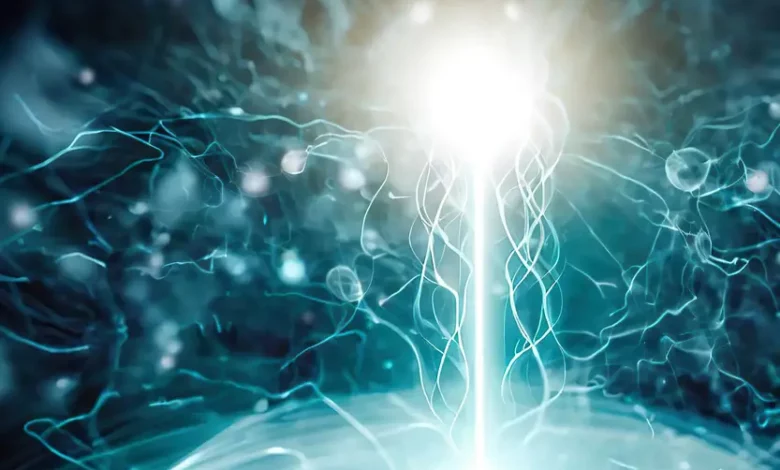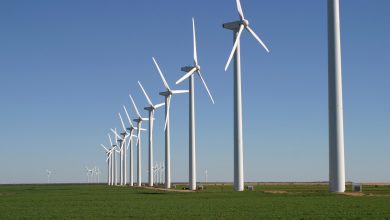
Engineers at the University of Massachusetts Amherst have developed a technique for harvesting electricity from air humidity, dubbed the “generic Air-gen effect.” According to research published in Advanced Materials, any material with nanopores less than 100 nanometers in diameter can be utilized to continuously generate electricity.
Engineers describe the “generic Air-gen effect”—nearly any material can be engineered with nanopores to harvest, cost-effective, scalable, interruption-free electricity.
Researchers at the University of Massachusetts Amherst have discovered a method to harvest continuous electricity from air humidity using any material with nanopores smaller than 100 nanometers, called the “generic Air-gen effect.” This technique, scalable and interruption-free, paves the way for a broad range of cost-effective, continuous electricity generation from various materials, overcoming limitations of condition-dependent renewables like solar and wind power.
A team of engineers at the University of Massachusetts Amherst has recently shown that nearly any material can be turned into a device that continuously harvests electricity from humidity in the air. The secret lies in being able to pepper the material with nanopores less than 100 nanometers in diameter. The research was published in the journal Advanced Materials.
“This is very exciting,” says Xiaomeng Liu, a graduate student in electrical and computer engineering at UMass Amherst’s College of Engineering and the paper’s lead author. “We are opening up a wide door for harvesting clean electricity from thin air.”
“The air contains an enormous amount of electricity,” says Jun Yao, assistant professor of electrical and computer engineering in the College of Engineering at UMass Amherst, and the paper’s senior author. “Think of a cloud, which is nothing more than a mass of water droplets. Each of those droplets contains a charge, and when conditions are right, the cloud can produce a lightning bolt—but we don’t know how to reliably capture electricity from lightning. What we’ve done is to create a human-built, small-scale cloud that produces electricity for us predictably and continuously so that we can harvest it.”

The heart of the man-made cloud depends on what Yao and his colleagues call the “generic Air-gen effect,” and it builds on work that Yao and co-author Derek Lovley, Distinguished Professor of Microbiology at UMass Amherst, had previously completed in 2020 showing that electricity could be continuously harvested from the air using a specialized material made of protein nanowires grown from the bacterium Geobacter sulfurreducens.
“What we realized after making the Geobacter discovery,” says Yao, “is that the ability to generate electricity from the air—what we then called the ‘Air-gen effect’—turns out to be generic: literally any kind of material can harvest electricity from air, as long as it has a certain property.”
That property? “It needs to have holes smaller than 100 nanometers (nm), or less than a thousandth of the width of a human hair.”
This is because of a parameter known as the “mean free path,” the distance a single molecule of a substance, in this case, water in the air, travels before it bumps into another single molecule of the same substance. When water molecules are suspended in the air, their mean free path is about 100 nm.
Yao and his colleagues realized that they could design an electricity harvester based around this number. This harvester would be made from a thin layer of material filled with nanopores smaller than 100 nm that would let water molecules pass from the upper to the lower part of the material. But because each pore is so small, the water molecules would easily bump into the pore’s edge as they pass through the thin layer. This means that the upper part of the layer would be bombarded with many more charge-carrying water molecules than the lower part, creating a charge imbalance, like that in a cloud, as the upper part increased its charge relative to the lower part. This would effectually create a battery—one that runs as long as there is any humidity in the air.
“The idea is simple,” says Yao, “but it’s never been discovered before, and it opens all kinds of possibilities.” The harvester could be designed from literally all kinds of material, offering broad choices for cost-effective and environment-adaptable fabrications. “You could image harvesters made of one kind of material for rainforest environments, and another for more arid regions.”
And since humidity is ever-present, the harvester would run 24/7, rain or shine, at night and whether or not the wind blows, which solves one of the major problems of technologies like wind or solar, which only work under certain conditions.
Finally, because air humidity diffuses in three-dimensional space and the thickness of the Air-gen device is only a fraction of the width of a human hair, many thousands of them can be stacked on top of each other, efficiently scaling up the amount of energy without increasing the footprint of the device. Such an Air-gen device would be capable of delivering kilowatt-level power for general electrical utility usage.
“Imagine a future world in which clean electricity is available anywhere you go,” says Yao. “The generic Air-gen effect means that this future world can become a reality.”
Reference: “Generic Air-gen Effect in Nanoporous Materials for Sustainable Energy Harvesting from Air Humidity” by Xiaomeng Liu, Hongyan Gao, Lu Sun and Jun Yao, 5 May 2023, Advanced Materials.
DOI: 10.1002/adma.202300748
This research was supported by the National Science Foundation, Sony Group, Link Foundation, and the Institute for Applied Life Sciences (IALS) at UMass Amherst, which combines deep and interdisciplinary expertise from 29 departments on the UMass Amherst campus to translate fundamental research into innovations that benefit human health and well-being.





